 July 27, 2023 John E. Ross, KD8IDJ, Editor
| ||||||
ARRL and NASA Team Up to Help Teachers A radio experiment held on July 26, 2023, to decode a slow-scan TV (SSTV) message sent via the ham radio station on the International Space Station (ISS) was successful.
The image was received by a group of educators at ARRL Headquarters in Newington, Connecticut through the voice repeater on the ISS. Teachers from around the United States were on hand for the ARRL Teachers Institute on Wireless Technology, a program that empowers educators to incorporate amateur radio into their science, technology, engineering, and mathematics (STEM) curriculum. As part of the professional development program, the group received and decoded the image sent by volunteers with Amateur Radio on the International Space Station (ARISS). The transmitted image said, "ARRL Teachers Institute: ensuring a space for radio in the next generation."
The teachers thought it was cool. "Amateur radio is so important to the future of engineering and STEM in our country," said Kristen Kucko, KQ4ECP, one of the institute participants. The group gathered outside ARRL Headquarters with antennas they had made earlier in the day. As the pass happened, the educators tracked the ISS by hand. A warble of SSTV transmission filled the air, and the group was excited. After the pass, they used laptops to decode the audio stream into an image, while they sat on picnic tables and enjoyed pizza and wings.
For ARRL Education and Learning Manager Steve Goodgame, K5ATA, the experiment was a way to allow teachers to engage with the power of radio. "When teachers can pull an image off the ISS via amateur radio, it gives a sense of accomplishment that gets them excited. We want to get them fired up about radio, so they can carry that energy back to their classrooms and do the same thing with their students," said Goodgame. Each of the teachers on hand for the second phase of the institute, -- "TI-2: Remote Sensing and Data Analysis," -- have already been through the introductory course and they are all licensed radio amateurs. The institute costs teachers nothing to attend, thanks to funding from the ARRL Education & Technology Program. Several local television stations from the Hartford-New Haven market covered the event. See coverage from WTNH News 8 (ABC) and WFSB Eyewitness News 3 (CBS). Hurricane Watch Net Seeks Bilingual Net Control Operators The Hurricane Watch Net (HWN) is looking for new members who are willing to train to become Net Control Operators. The net generally activates whenever a system has achieved hurricane status and is within 300 statute miles of a populated landmass. This can vary, however, due to the forward speed and intensity of a storm, or at the request of the forecasters at the National Hurricane Center. Once activated, the HWN continuously operates until a storm is no longer a threat to life and property. The mission of the net is to disseminate the latest advisories issued by the National Hurricane Center, and to obtain real-time, ground-level weather conditions and initial damage assessments from amateur radio operators in the affected areas. The net then relays that information to the National Hurricane Center by way of WX4NHC, and when required, the Canadian Hurricane Centre. It also functions as a backup communication link for the National Hurricane Center, National Weather Service Forecast Offices, the Canadian Hurricane Centre, Emergency Operations Centers, emergency management agencies, non-governmental organizations, and other vital interests that can involve military relief operations. Such operations can be involved in the protection of life and property before, during, and after a hurricane event. HWN Manager Bobby Graves, KB5HAV, says training will be provided and each candidate will go through a probationary period with a mentor. Graves, an ARRL member, says an applicant's station must be reliable. "While having a tower, beam, and/or amplifier is not a requirement, your station must allow you to hear and be heard. Therefore, directional antennas and amplifiers are preferred," he said. The net coverage area includes the hurricane-prone areas of eastern Canada, the US East Coast, the Gulf of Mexico, Central America, and the Caribbean. The net specifically seeks applicants in the middle-to-western sections of the US, Canada, Central America, and the Caribbean. "As always, the HWN is hoping for a quiet season, yet [we are] prepared for the worst," said Graves. Those interested in learning more can visit the HWN Net Control Information web page at https://hwn.org/about-us/ncs_info.html A Quick 2023 Field Day Reminder The final day to submit entries for ARRL Field Day 2023 was July 25. Currently, more than 4,500 entries have been submitted, but entrants Amateur Radio in the News ARRL Public Information Officers, Coordinators, and many other member-volunteers help keep amateur radio and ARRL in the news. "Nonprofit uses Shavano Park event to educate public on amateur radio" / Community Impact (Texas) July 20, 2023 -- The San Antonio Radio Club is an ARRL Affiliated Club. "Amateur HAM Radio Operators Serve as Vital Link in Times of Crisis" / Mountain Lake PBS (New York) July 21, 2023 --The Champlain Valley Amateur Radio Club is an ARRL Affiliated Club. "Teaching a new generation: Amateur radio group holds summer class" The Paducah Sun (Kentucky) July 22, 2023 -- The Paducah Amateur Radio Association is an ARRL Affiliated Club. "Demonstration of Ham Radio and its modern capabilities, July 25" / The Loop (California) July 26, 2023 -- The Tehachapi Amateur Radio Association is an ARRL Affiliated Club. "Teachers in Newington build antennas to decode message from International Space Station" / WTNH-TV (Connecticut) July 26, 2023 -- ARRL® The National Association for Amateur Radio.
ARRL Podcasts On the Air Passing traffic is a ham radio activity that's nearly as old as ham radio itself, and getting accurate messages to their destination in a timely manner takes training and skill. In addition to participating in nets, hams also have the opportunity to take on ARRL Field Organization positions that are responsible for traffic. In this episode, "When Messages Matter: Passing Traffic," we talk to Ethan Hansen, KC1OIP, who fulfills one such position, Official Relay Station, in ARRL's National Traffic System. Listen in to learn about what it takes to become an Official Relay Station, how the position makes a difference in the community, and how it benefits your amateur radio skills and experience. ARRL Audio News The On the Air podcast is available on iTunes (iOS) and Stitcher (Android). The On the Air podcast and ARRL Audio News are also on blubrry -- On the Air | ARRL Audio News. Announcements The San Max Patronal Celebration 2023 will take place on August 1 - 31. This is an annual event that radio amateurs in Mexico participate in to celebrate San Maximilian Maria Kolbe, patron saint of radio amateurs. The special event call sign, 4A2MAX, will be activated on August 1 at 00:00 XE Central Time, and it will stay active through August 31 at 23:59 XE Central Time. All amateur radio operators are invited to participate. Official rules and additional information are available at QRZ.com, on the 4A2MAX web page. In Brief... The ARRL Board of Directors met for their Second Meeting, July 21 - 22, 2023, and approved increasing the regular membership dues rate to $59 a year starting January 1, 2024. Included with the new dues rate was a decision to separate the printed, mailed magazine from membership. A summary of the dues changes and related fees, effective January 1, 2024, are available on the ARRL website. Read more about the decision in a Member Bulletin from ARRL President Rick Roderick, K5UR. The New Jersey QRP Club will hold their 12th annual Skeeter Hunt on August 27, 2023. The objective is to get QRP operators out of their shacks and into the fresh air encouraging them to spread their wings and fill the airwaves with "Skeeters." While commercial equipment can be utilized, bonus points will be awarded to those who homebrewed or kit-built their own transceiver or separate transmitter/receiver. Equipment not built by the operator will not qualify for bonus points, as it will be considered commercial equipment. The event will be a 4-hour sprint beginning at 17:00 UTC and running until 21:00 UTC (1:00 to 5:00 PM EDT). The next event will be held on the third Sunday of August 2024. QRP operators who wish to be designated Skeeters can request a Skeeter number by sending an email with their name, call sign, and state/province from which they will be operating to [email protected]. You do not have to operate portable to be a Skeeter. Please indicate if you intend to operate from a state other than your home state listed on QRZ. Skeeter numbers are being issued now, and will be issued until the day before the event. For more information and the official rules, visit the Official NJQRP Skeeter Hunt web page. The K7RA Solar Update Tad Cook, K7RA, of Seattle, Washington, reports for this week's ARRL Propagation Bulletin, ARLP030:
Average daily sunspot numbers declined from 130.6 to 128.1 over the past week of July 20 - 26. Average daily solar flux declined significantly from 190.5 to 172.2. The solar flux forecast sees values at 168, 165, and 162 on July 27 - 29; 158 on July 30 - 31; 155 and 158 on August 1 - 2; 165 on August 3 - 4; 170 and 175 on August 5 - 6; 180 on August 7 - 10; 175 on August 11 - 13; 180 on August 14 - 15; 175 on August 16 - 18; 170 on August 19; 165, 165, and 160 on August 20 - 22, and 155 on August 23 - 26. Predicted planetary A index is 20, 10, 5, 10, and 8 on July 27 - 31; 5, 5, 10, and 8 on August 1 - 4; 5 on August 5 - 9; 10 on August 10; 8 on August 11 - 13; 5 on August 14 - 19, and 10, 8, and 5 on August 20 - 22. Read about sunspots, flares, and aurora at the following link: Check out a story about the Mars rover seeing the far side of the sun at the link below: Also, see the report of a rocket punching a hole in the ionosphere at: Nearly 5 decades ago in Marin County, California, I, too, witnessed a rocket penetrating the ionosphere. It was a huge, dramatic display. My friend had seen a similar thing before, and said it was created by a rocket launch from Vandenberg Air Force Base in Southern California. Sunspot numbers for July 20 - 26, 2023, were 131, 121, 103, 117, 141, 137, and 147, with a mean of 128.1. The 10.7-centimeter flux was 184.3, 172.8, 174.4, 172.5, 165.1, 169, and 167.4, with a mean of 172.2. Estimated planetary A indices were 10, 13, 9, 6, 7, 11, and 21, with a mean of 11. Middle latitude A index was 10, 11, 9, 5, 8, 12, and 23, with a mean of 11.1.
A comprehensive K7RA Solar Update is posted Fridays on the ARRL website. For more information concerning radio propagation, visit the ARRL Technical Information Service, read "What the Numbers Mean...," and check out the Propagation Page of Carl Luetzelschwab, K9LA. A propagation bulletin archive is available. For customizable propagation charts, visit the VOACAP Online for Ham Radio website. Share your reports and observations. A weekly, full report is posted on ARRL News. Just Ahead in Radiosport Yearlong -- ARRL Volunteers On the Air (VOTA). See the State Activations Schedule for weekly W1AW Portable Operations, including:
Upcoming Contests:
Visit the ARRL Contest Calendar for more events and information. Upcoming Section, State, and Division Conventions
Search the ARRL Hamfest and Convention Database to find events in your area. Have News for ARRL? Submissions for the ARRL Letter and ARRL News can be sent to [email protected]. -- John E. Ross, KD8IDJ, ARRL News Editor
ARRL -- Your One-Stop Resource for
Subscribe to...
Free of charge to ARRL members...
| ||||||
.jpg)
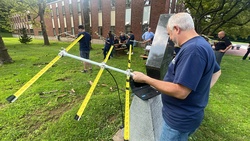
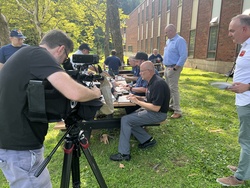
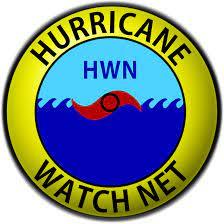 HWN is especially interested in recruiting bilingual operators who are fluent in Spanish and English or French/Creole and English. Net Control responsibilities can entail hours of duty to ensure all received ground-truth weather reports are forwarded directly to the National Hurricane Center in Miami.
HWN is especially interested in recruiting bilingual operators who are fluent in Spanish and English or French/Creole and English. Net Control responsibilities can entail hours of duty to ensure all received ground-truth weather reports are forwarded directly to the National Hurricane Center in Miami..jpg) are encouraged to check their submitted logs to make sure they are complete and that no additional documents are needed. Entries can be checked at
are encouraged to check their submitted logs to make sure they are complete and that no additional documents are needed. Entries can be checked at .jpg)
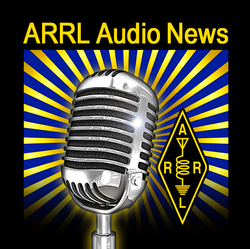 Listen to
Listen to 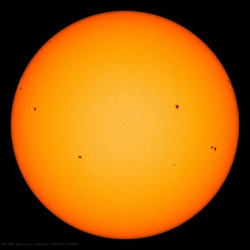
-2023.jpg) July 26 - August 1 -- Rhode Island W1AW/1
July 26 - August 1 -- Rhode Island W1AW/1-Blue.jpg)








